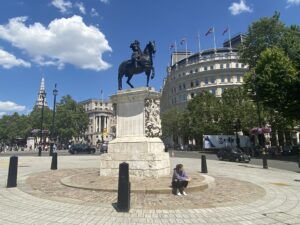The Royal Standard, serving as the official flag of the British monarch, is a visual symphony of the realm’s unity and enduring legacy, reflecting the diversity and unique cultural heritage of its constituent nations. From the striking three gold lions passant of England to the valiant red lion rampant of Scotland, each element tells a tale of the monarch’s realm. Let’s embark on this fascinating exploration of the Royal Standard’s design, its variations for England and Scotland, and its significance within the tapestry of the British monarchy.
As the official flag of the British monarch, the Royal Standard symbolizes the unity and continuity of the monarchy, whilst also reflecting the diversity of the United Kingdom’s constituent nations. It is a distinct flag from the Union Jack, with different versions for England and Scotland to honour the unique cultural heritage of these nations. This article will explore the design and history of the Royal Standard, highlighting the subtle variations between the English and Scottish versions.
The English Royal Standard
The Royal Standard used in England, Wales, and Northern Ireland is a banner of the United Kingdom’s coat of arms. The design is divided into four quadrants. The first and fourth quadrants represent England and contain three gold lions passant (walking with the right forepaw raised) on a red field. The second quadrant represents Scotland and displays a red lion rampant (standing on one hind leg with forepaws raised) on a gold field. The third quadrant represents Ireland, illustrated by the gold harp of Ireland on a blue field.
It’s important to note that the Royal Standard is flown only when the monarch is present. This could be on official residences when King Charles III and/or Queen Consort Camilla is in, on cars, they are travelling in, or on ships during a royal visit.
The Scottish Royal Standard
In Scotland, a different version of the Royal Standard is used to respect the historical and cultural distinctiveness of the nation. This variation gives precedence to the Scottish elements of the United Kingdom’s coat of arms.
In the Scottish Royal Standard, the first and fourth quadrants display the red lion rampant of Scotland, as opposed to the three lions of England in the English standard. The second quadrant shows the three lions passant of England, and the third quadrant, like the English version, represents Ireland with the gold harp on a blue field.
When King Charles III and/or Queen Consort Camilla are in Scotland, this version of the Royal Standard is flown on her official residences, cars, and ships.
The Significance of the Royal Standard
The Royal Standard is much more than just a flag—it is a visual representation of the monarchy and the unity of the nations that make up the United Kingdom. The flag’s design, with its distinct English and Scottish versions, acknowledges the rich, diverse heritage within the UK, paying tribute to the unique identities that form this unity.
Moreover, the flag holds ceremonial importance. The raising of the Royal Standard signifies the presence of the monarch, lending a sense of occasion and formality to royal engagements.
Listen to London History Podcast Episode 114: Buckingham Palace




